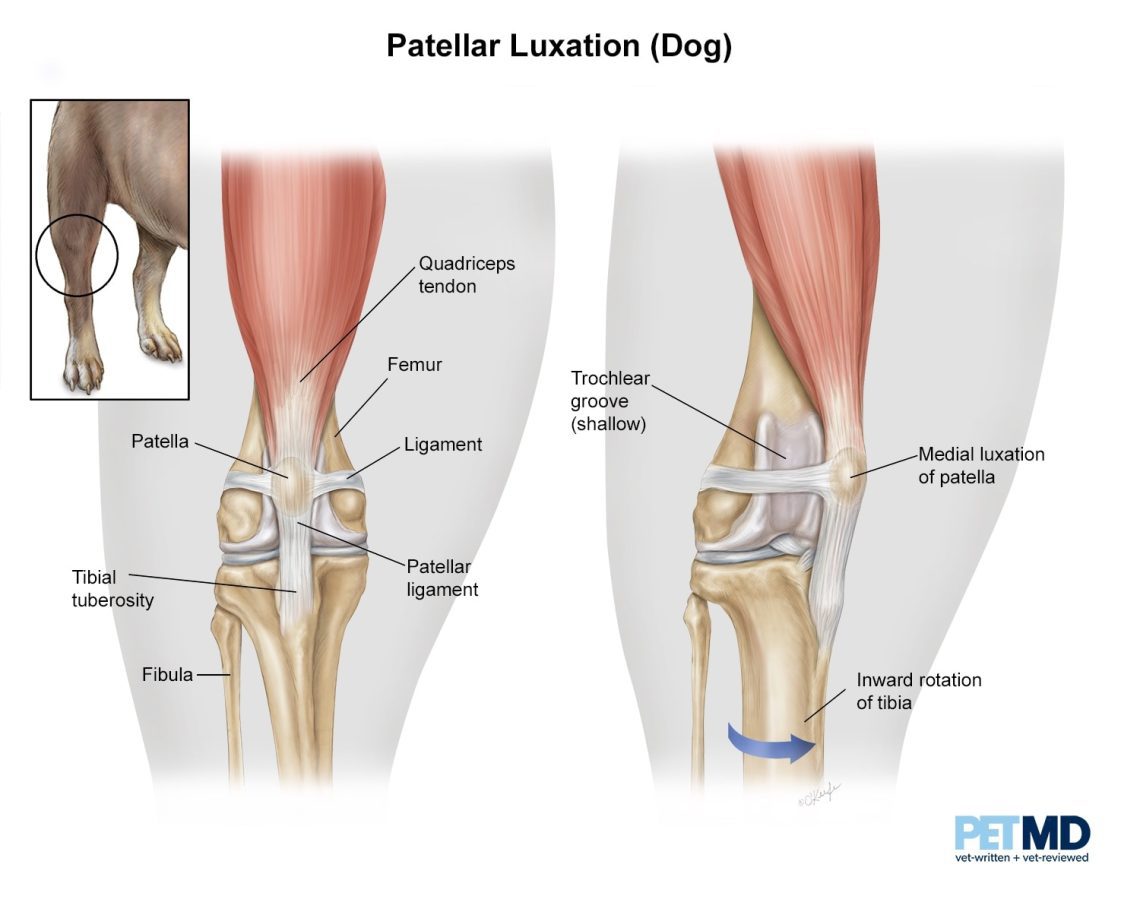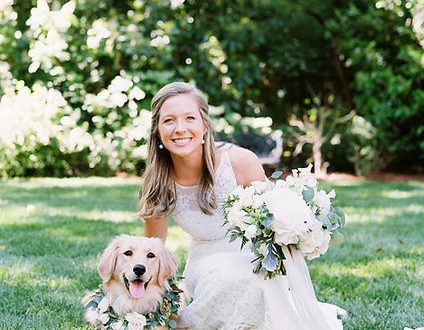
Girnelės išnirimas šunims: diagnostika, gydymas ir kt
Displacement of the patella from its normal position is very common in dogs. Although small or toy breeds such as Chihuahuas, Yorkshire Terriers and Spitz are most susceptible to this pathology, it can also occur in other breeds of dogs.
In some cases, a luxating patella is treated with physical therapy and/or medication. But if the condition of the dog is severe and it causes him severe pain, then surgery may be required.
Turinys
How does a luxating patella happen in dogs?
A dislocation occurs when a dog’s kneecap (or patella), which is normally located in the groove of the femur, is displaced from its normal position. It can occur on one or both hind legs. In most small breed dogs, this displacement occurs medially or towards the inside of the limb. Patella luxation in dogs can be lateral, but this is less common and usually occurs only in larger breeds.
In the case of a dislocated patella in a dog, you may notice a “bouncing” lameness or a blocking of the paws at an odd angle. Once the patella is back in place, the dog returns to normal as if nothing had happened.
Patella luxation in dogs can be the result of trauma, but is more commonly associated with congenital anomalies or skeletal changes during growth. These changes lead to a change in the force of impact on the knee and, as a result, to a dislocation of the patella.
Degrees of luxating patella in dogs
Dislocation of the patella in dogs is diagnosed by an orthopedic veterinarian based on the results of a clinical examination using palpation and is determined by the degree of dislocation. When establishing the degree of dislocation, a different degree of lameness is observed.
- Grade I: the patella is displaced from its normal position only with physical impact, and after the impact stops, it returns back. Grade I is usually discovered incidentally on examination by a veterinarian and has no clinical symptoms.
- II laipsnis: the patella is spontaneously displaced from its normal position by physical impact. When the patella leaves its normal position, periodic lameness is observed, and in case of damage to the cartilage caused by frequent dislocations, painful sensations appear.
- Grade III: permanently the patella is outside the block of the femur, but it can be returned to its normal position with the help of physical impact. At the same time, when the impact is stopped, the knee is displaced again. Due to changes in the structure of the limbs and / or damage to the cartilage as a result of repeated dislocation, this degree is manifested by more severe pain and constant lameness.
- Grade IV: the patella is permanently dislocated and cannot be manually reset. There are usually severe changes in the structure of the limbs, which over time lead to lameness and other impairments of mobility, as well as impaired function of the limbs.
Some dogs with patella luxation may have a concurrent rupture of the cranial cruciate ligament—called an anterior cruciate ligament tear in human medicine.
Patella Dislocation in Dogs: Treatment
Methods of treatment of this pathology in dogs vary from conservative treatment to surgical intervention, depending on the degree of dislocation.
More commonly, grade I and II dislocations are treated with pain medication and anti-inflammatory drugs, weight control, and exercise restriction. In such cases, physical therapy can be used as it can help the dog regain muscle mass and return to normal activity levels. Some dogs with grade II dislocation who are in severe pain due to cartilage damage and are severely lame may benefit from surgery to improve their quality of life. Surgery is usually indicated for both grade III and IV luxation of the patella because such dislocation leads to noticeable lameness and severe pain.
Surgical treatment options for luxating patella in dogs are divided into correction of bone structures or soft tissues. Regardless of the type of surgery, the overall goal is to correct the mechanism of the quadriceps. This will allow the patella to move normally and remain in the groove of the femur. Common surgical procedures include:
- Deepening of the block of the femur.
- Displacement of the roughness of the tibia.
- Strengthening the capsule of the knee joint.
If both hind limbs of the dog are affected, the doctor will usually prescribe a phased surgical treatment, starting with surgery on the more affected knee.
For better wound healing, the dog will need to wear a soft bandage or bandage for 3-5 days with limited exercise for about 4-8 weeks after surgery. During the dog’s recovery period, walks should be limited to short walks to the toilet on a leash, and space at home should be limited with a cage or a small room to control activity. Physical therapy can help reduce the loss of muscle mass in the affected limb and help the animal return to normal activity levels more quickly.
The future of a dog with a luxating patella
Fortunately, many dogs with this condition do not need surgery to return to a normal, active life. Sometimes it is enough for them to simply reduce physical activity or undergo a course of physiotherapy. But even if the pet needs surgery, the rehabilitation takes a short period. Most likely, within a few months after treatment, the four-legged friend will be as active as before.






